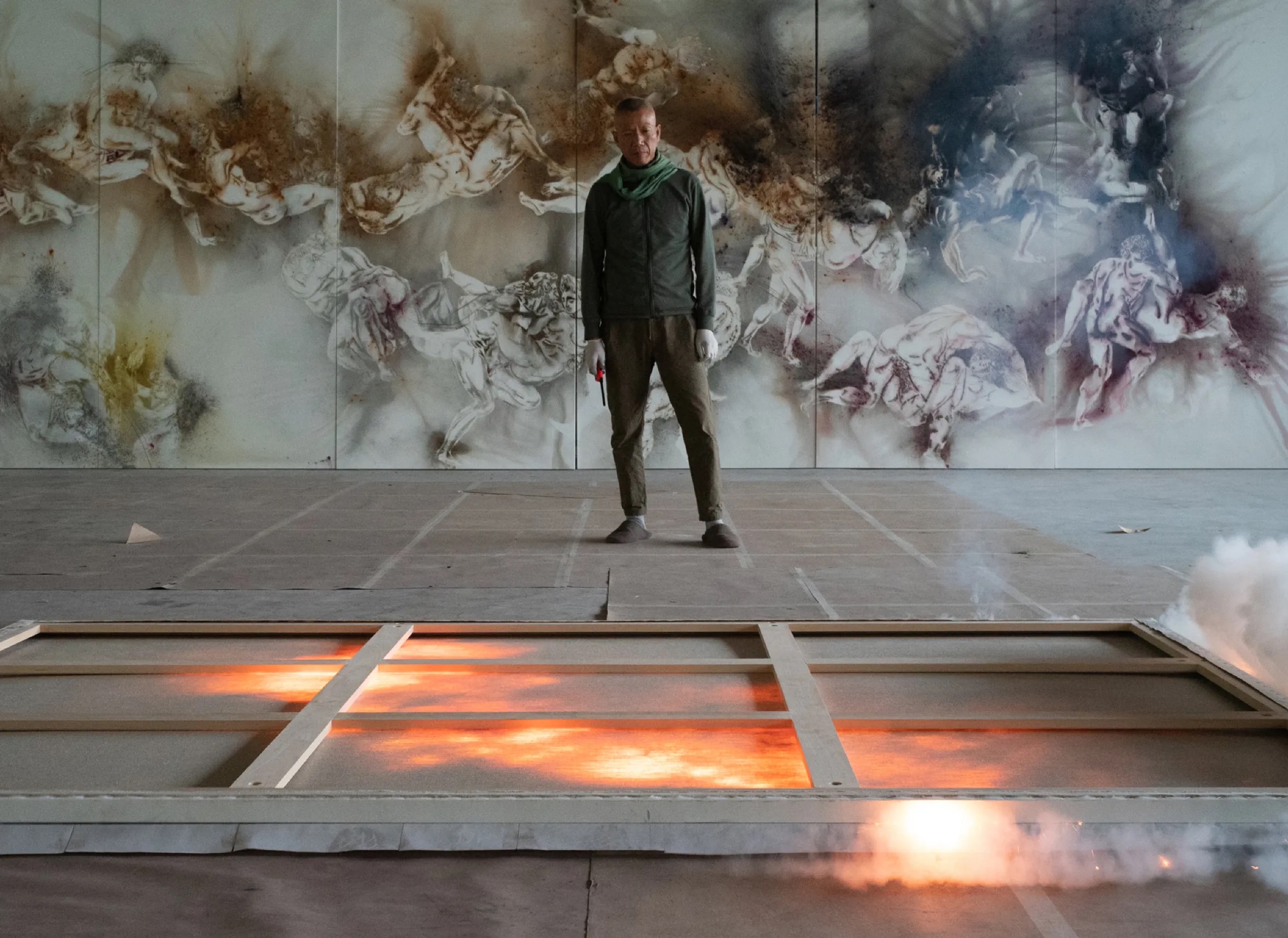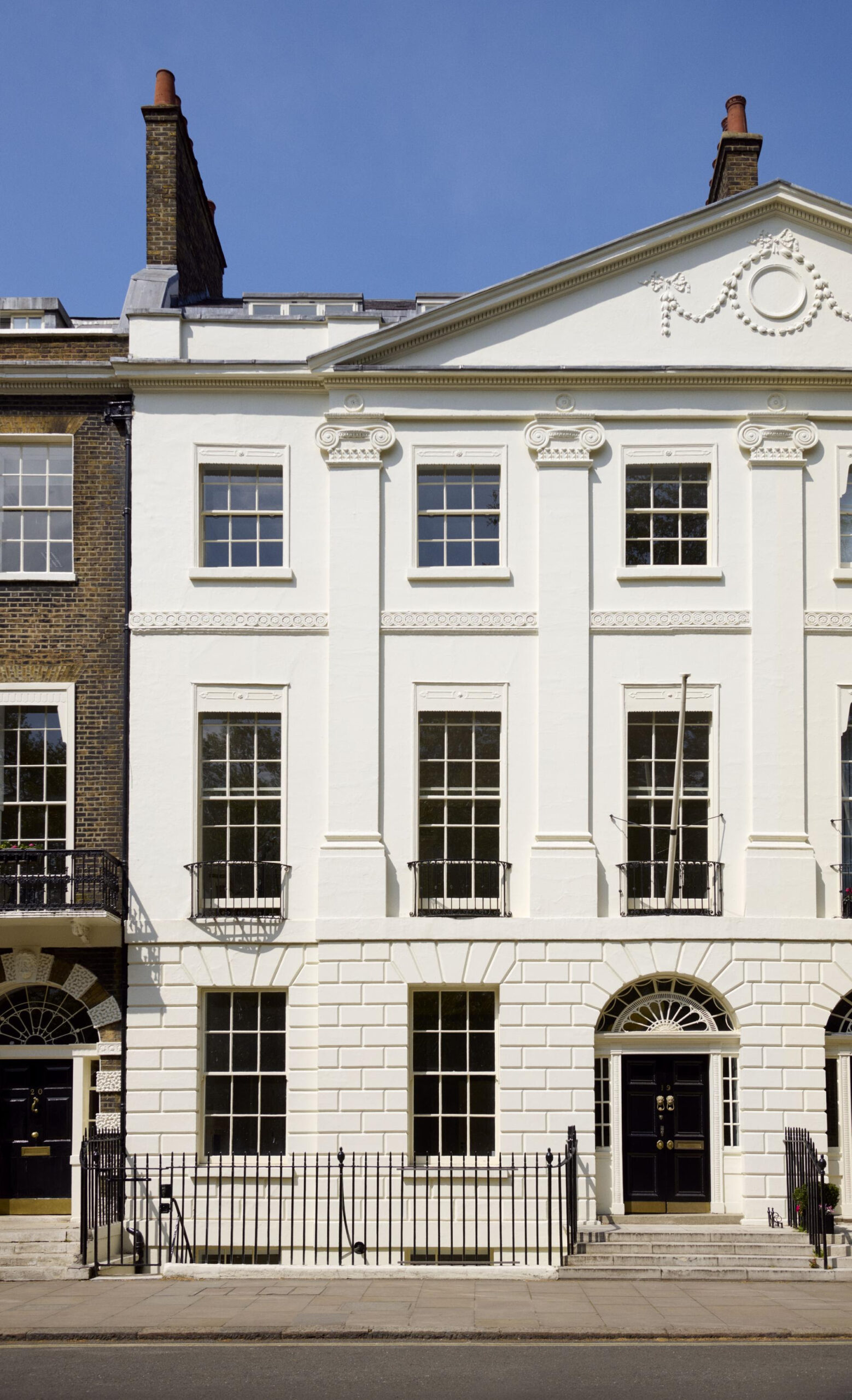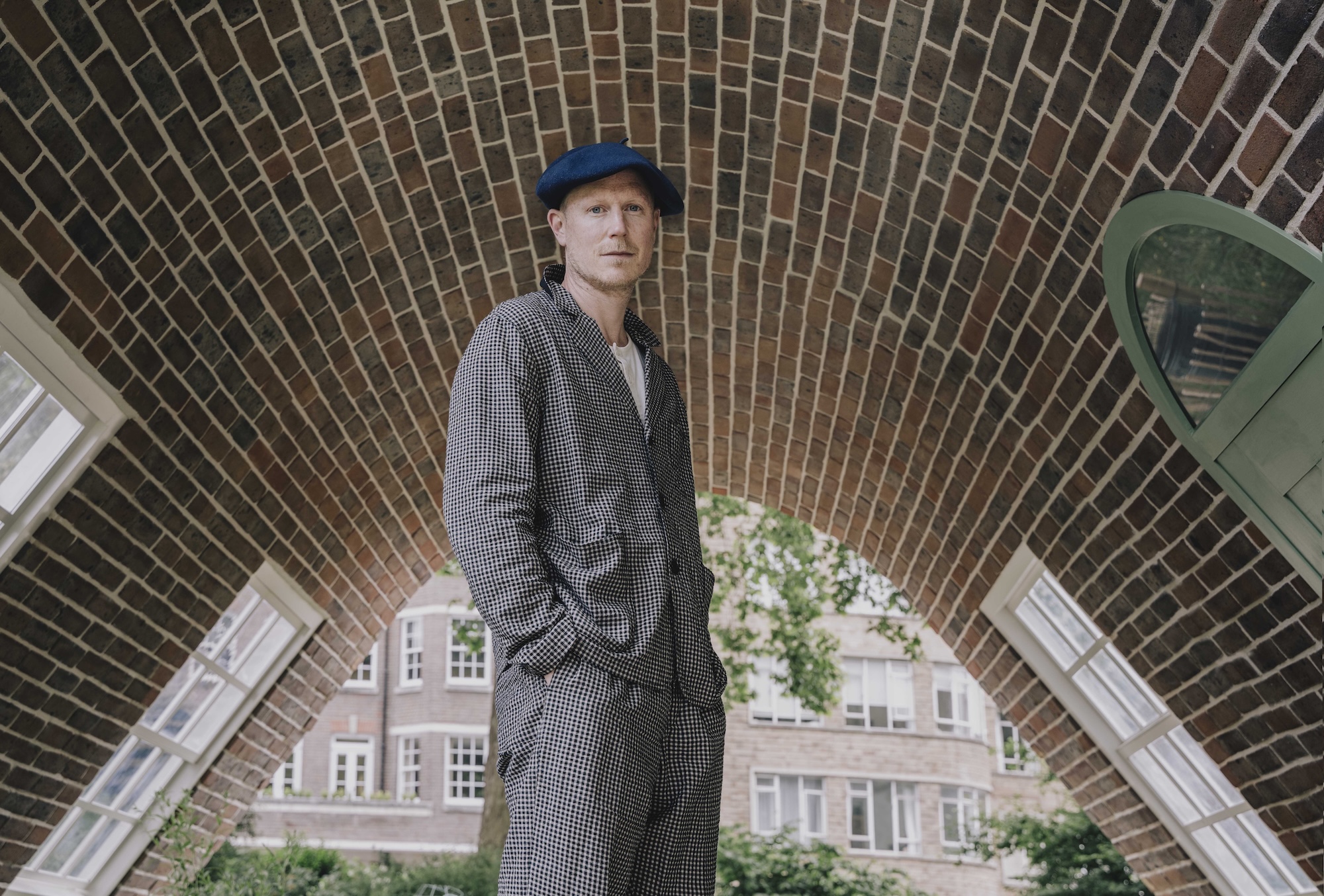
by jsendak | May 23, 2025 | Art
The Power of Art: Exploring the Intersection of Tradition and Innovation
Art has always been a powerful medium for expressing ideas, emotions, and cultural narratives. Throughout history, artists have pushed the boundaries of creativity and challenged societal norms through their work. From the traditional to the avant-garde, art has the ability to captivate, inspire, and provoke thought.
In today’s digital age, the art world continues to evolve at a rapid pace, with new technologies and mediums constantly reshaping the way we experience and interact with art. However, amidst all this change, there is a timeless quality to art that connects us to our past and roots us in our shared humanity.
Exploring Tradition Through Innovation
One artist who exemplifies this balance between tradition and innovation is Cai Guo-Qiang. Renowned for his explosive gunpowder paintings, Cai blends ancient Chinese techniques with contemporary artistic practices to create mesmerizing works that challenge our perceptions of art and beauty.
In his series Study of Birds, Cai explores the natural world through a unique lens, capturing the ethereal beauty and grace of birds in flight. By using gunpowder as his medium, Cai infuses his work with a sense of dynamism and energy that transcends traditional painting techniques.
Looking to the Future
As we navigate the complexities of the modern world, art serves as a guiding light, reminding us of our past and pointing the way towards the future. Through the fusion of tradition and innovation, artists like Cai Guo-Qiang inspire us to think differently, create boldly, and embrace the power of art to transform our world.

Ignition of gunpowder painting Study of Birds, 2018. Photo by Tatsumi Masatoshi, courtesy Cai Studio White Cube has announced a collaboration with
Read the original article

by jsendak | May 22, 2025 | Art
The Power of Art: Exploring Social Justice through Contemporary Works
Art has always been a powerful tool for expressing ideas, challenging norms, and sparking important conversations. From the politically charged works of the Renaissance to the protest art of the civil rights movement, artists have used their creativity to shed light on social injustices and advocate for change.
In today’s ever-changing world, the role of art in social justice movements is as relevant as ever. The 13th Berlin Biennale for Contemporary Art, set to open on June 13th, brings together artists from around the world to explore pressing issues of our time through their work. By delving into themes of inequality, discrimination, and human rights, these artists confront viewers with the harsh realities of our society and push them to consider their own role in fostering change.
Historical Context
Throughout history, art has served as a mirror reflecting the sociopolitical climate of its time. From Francisco Goya’s “The Third of May 1808” to the bold graffiti of the streets during the Arab Spring, artists have documented and responded to the injustices they see around them. Their works have spurred revolutions, challenged oppressive regimes, and given a voice to the marginalized.
Contemporary Relevance
In today’s digital age, social media has become a powerful platform for artists to share their work and amplify their message. From the viral campaigns of #BlackLivesMatter to the global outcry for climate justice, artists are using their art to mobilize communities, provoke thought, and ignite change on a global scale.
As we navigate a world rife with inequality and division, the 13th Berlin Biennale serves as a timely reminder of the power of art to unite, inspire, and challenge us all to strive for a more just and equitable society.

13th Berlin Biennale for Contemporary Art opens June 13.
Read the original article

by jsendak | May 22, 2025 | Art
YDP is a non-profit project space that serves as a platform for artists of diverse Asian backgrounds, highlighting their unique perspectives and experiences within the diaspora. This article explores the central theme of identity and belonging in the context of Asian diasporic art, tracing its roots in both historical and contemporary contexts.
The Legacy of Asian Diasporic Art
Throughout history, Asian diasporic artists have grappled with questions of identity and belonging, often navigating multiple cultures and histories in their work. From the early 20th-century Asian American artists who sought to assert their voice in a predominantly white art world, to the contemporary artists addressing issues of globalization and cultural hybridity, the legacy of Asian diasporic art is rich and complex.
Contemporary Perspectives
Today, artists of Asian descent continue to explore themes of identity and belonging in their work, drawing inspiration from their diverse backgrounds and experiences. By creating spaces like YDP, they are able to showcase their art and connect with audiences who may share similar cultural landscapes.
Exploring Diversity and Representation
Through a combination of traditional and contemporary art practices, Asian diasporic artists challenge stereotypes and celebrate the diversity of Asian identities. By sharing their stories and experiences, they contribute to a more nuanced understanding of what it means to be Asian in the diaspora.
The Role of YDP
As a project space dedicated to supporting artists of diverse Asian backgrounds, YDP plays a crucial role in amplifying the voices of Asian diasporic artists and fostering a sense of community within the art world. By providing a platform for these artists to share their work, YDP contributes to a wider conversation about identity, representation, and belonging.

A non-profit project space dedicated to supporting artists of diverse Asian backgrounds and drawing from different diasporic experiences, YDP
Read the original article

by jsendak | May 21, 2025 | Art
The Power of Sound: Exploring Sufism at MTO
Sound has always held a profound significance in the realm of spiritual practices, with music and chants often used as tools for connecting with the divine. This age-old tradition can be seen in the mystical world of Sufism, where music and sound are not just forms of entertainment, but pathways to spiritual enlightenment.
At the Musée d’Art et de Culture Soufis MTO, an upcoming exhibition delves into the intricate relationship between Sufism and sound. This unique exploration showcases how music, poetry, and rituals are used in Sufi practices to induce states of ecstasy and transcendence.
From the mesmerizing melodies of the qawwali music to the rhythmic whirling of the dervishes, the exhibition highlights the diverse ways in which sound is utilized in Sufism. Visitors will have the opportunity to immerse themselves in the rich tapestry of Sufi traditions, gaining a deeper understanding of the spiritual significance of sound.
As we navigate the complexities of the modern world, the exhibition serves as a reminder of the timeless wisdom found in ancient practices. By exploring the intersection of Sufism and sound, we are invited to reflect on the universal power of music and its ability to transcend cultural boundaries.

An exhibition at the Musée d’Art et de Culture Soufis MTO explores the dialogue between Sufism and sound.
Read the original article

by jsendak | May 20, 2025 | Art
Welcome to the World of Alex Chinneck: A Week at the Knees
British sculptor Alex Chinneck is known for his mind-bending and visually stunning installations that defy the laws of physics and challenge our perceptions of reality. His latest commission, A Week at the Knees, continues this tradition with its mesmerizing and thought-provoking design.
Chinneck’s work is reminiscent of the surrealism movement of the early 20th century, where artists like Salvador Dali and Rene Magritte sought to explore the unconscious mind and push the boundaries of conventional art. Just as these artists sought to disrupt our understanding of reality, Chinneck’s sculptures disrupt the spaces they inhabit, inviting viewers to question their surroundings and look at the world in a new light.
Exploring Themes of Transformation and Illusion
With A Week at the Knees, Chinneck delves into themes of transformation and illusion. By creating a sculpture that appears to be bending and contorting in impossible ways, he challenges our perceptions of what is possible and asks us to consider the limitations of our own minds. In a world where technology allows us to manipulate images and create virtual realities, Chinneck’s work serves as a reminder of the power of physical objects and the importance of experiencing art in person.
- Historical Context: Chinneck’s sculptures can be seen as a modern continuation of the tradition of optical illusions and trompe l’oeil techniques used by artists throughout history to create stunning visual effects.
- Contemporary Relevance: In an age where reality is increasingly filtered through screens and digital devices, Chinneck’s work challenges us to engage with the physical world around us and consider the ways in which art can transform our perceptions.
Join us on a journey into the fantastical world of Alex Chinneck, where reality is just a suggestion and imagination knows no bounds.

Marta Bogna-Drew meets British sculptor Alex Chinneck to discuss his latest commission: A Week at the Knees.
Read the original article

by jsendak | May 20, 2025 | Art
The Power of Artistic Communities: Nurturing Creativity and Resilience
In an increasingly fragmented world, the role of artistic communities in fostering creativity and resilience has become more crucial than ever. Throughout history, artists have come together to support and inspire one another, forming networks that not only enhance individual artistic practice but also contribute to broader social and cultural movements.
From the vibrant salons of Paris in the 19th century to the thriving artist colonies of the American West, such as the legendary Taos Society of Artists, these communities have provided a space for collaboration, mentorship, and collective growth. Today, in the face of ongoing challenges such as systemic racism and social inequality, the need for supportive artistic communities is particularly acute for artists of color.
Hold Space Retreat for Artists of Color
One such initiative addressing this need is the Hold Space Retreat for Artists of Color, hosted by the renowned Ox-Bow School of Art & Artists’ Residency. This transformative program, taking place from July 6, 2025, brings together a diverse group of artists of color for a week-long retreat focused on creativity, self-care, and community building.
Through workshops, discussions, and shared meals, participants will have the opportunity to connect with peers, learn from experienced mentors, and explore their artistic practices in a nurturing and supportive environment. By centering the voices and experiences of artists of color, the Hold Space Retreat aims to empower its participants to create meaningful change both in their own work and in the wider art world.
As we navigate an uncertain future, it is clear that the power of artistic communities to nurture creativity and resilience is more vital than ever. By coming together, sharing our stories, and supporting one another, we can create a more inclusive and vibrant cultural landscape for all.

Hold Space Retreat for Artists of Color // Ox-Bow School of Art & Artists’ Residency // July 6, 2025
Read the original article






